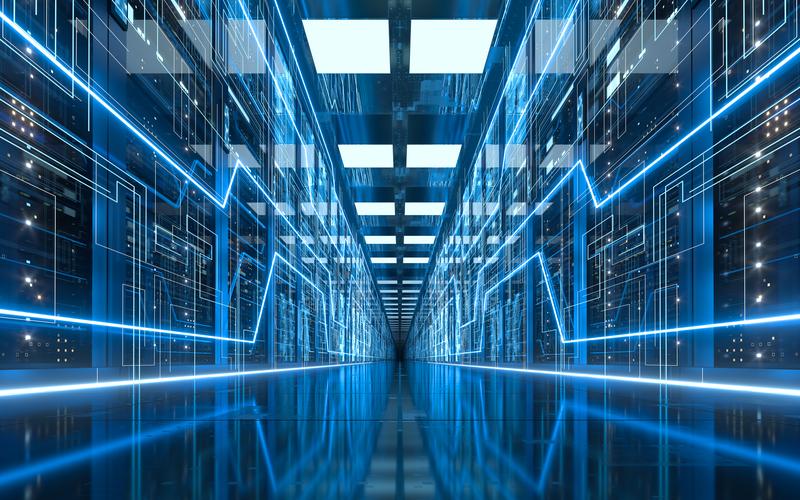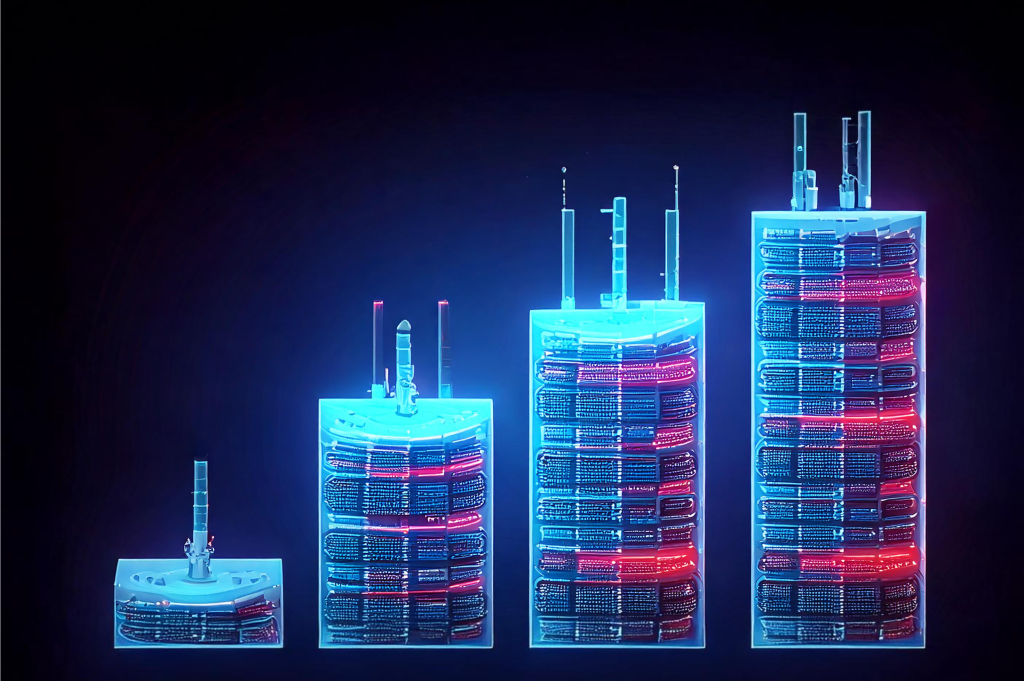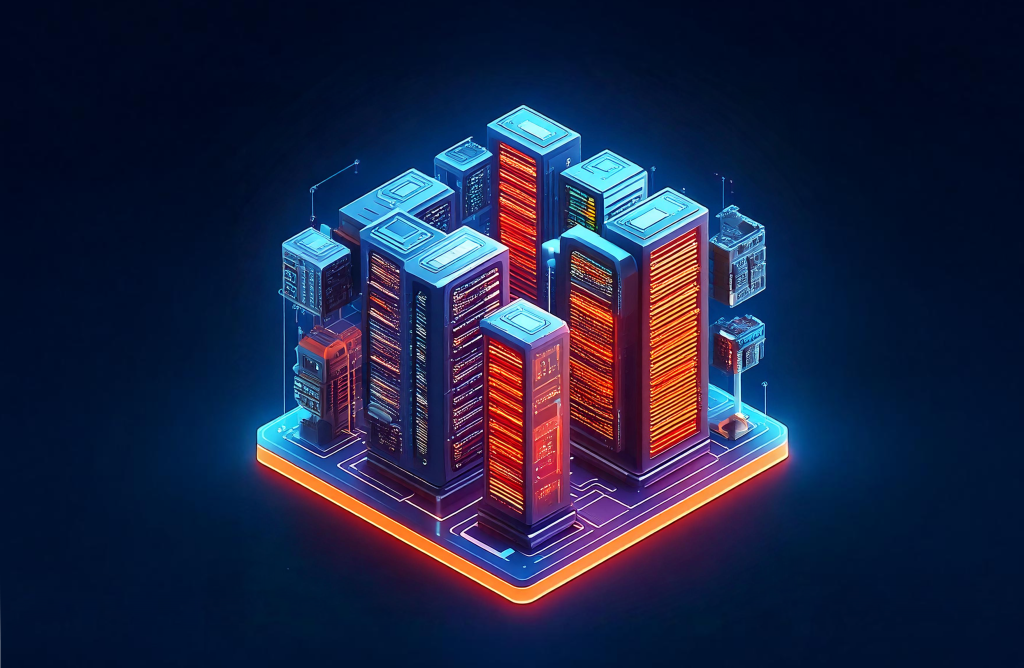Blog / Data Centre Tiers ClassificationSHARE:
What are Data Centre Tiers?
Data centers are classified into different tiers based on their reliability, redundancy, and uptime capabilities. The Uptime Institute, an independent organization that establishes standards for data centre performance and reliability, has developed the most widely recognized tier system. While the initial definition included four tiers, there have been discussions and advancements regarding the potential introduction of a fifth tier.
Tier I data centres cater to basic IT needs in office settings. They provide limited reliability and availability, featuring uninterruptible power supplies (UPS) to address power fluctuations and dedicated cooling equipment. However, Tier I lacks redundant components, rendering them vulnerable to unexpected failures. Maintenance often requires complete shutdowns, leading to unplanned disruptions.
Tier II data centres offer improved redundancy and capacity compared to Tier I. They incorporate redundant power and cooling components, such as generators, energy storage, chillers, and UPS modules. These redundancies enhance maintenance opportunities and safeguard against disruptions. While Tier II allows for component removal without complete shutdowns, unforeseen interruptions can still impact operations.
Tier III data centres provide concurrent maintainability, enabling maintenance or component replacements without affecting IT operations. They offer higher redundancy and availability than Tier II, featuring redundant distribution paths to prevent single points of failure. Tier III ensures continuous operation and increased fault tolerance, necessitating fault-tolerant power designs in IT equipment.
Tier IV data centres represent the epitome of reliability, fault tolerance, and availability. They boast multiple independent and isolated systems serving as redundant capacity components and distribution paths. This isolation ensures that failures in one system do not compromise others. Tier IV facilities can withstand planned and unplanned disruptions without affecting IT operations. They require continuous cooling and stringent fault-tolerant power designs in IT equipment.
| Tier | Description | Redundancy | Expected Uptime | Annual Downtime |
| Tier 1 | Single path for power and cooling; little to no redundancy. | Few, if any, redundant components. | 99.671% | 28.8 hours |
| Tier 2 | Single path for power and cooling; some redundancy. | Some redundant components. | 99.741% | 22 hours |
| Tier 3 | Multiple paths for power and cooling; concurrently maintainable. | Redundant capacity components and multiple independent distribution paths. | 99.982% | 1.6 hours |
| Tier 4 | Completely fault-tolerant; redundancy for every component. | Multiple, independent, and active power and cooling distribution paths; fault-tolerant. | 99.995% | 26.3 minutes |
In 2017, a data centre provider introduced the concept of a Tier 5 data centre. This proposed tier aims to enhance redundancy and long-term power capabilities while introducing additional features such as zero roof penetrations. It’s important to note, however, that the Tier 5 designation has not yet received official certification from the Uptime Institute.
OneAsia’s data centres are purpose-built to meet the stringent Tier 3+ standards, ensuring a remarkable level of reliability and redundancy. Moreover, we offer the option for clients to upgrade their data centres to Tier 4 upon request, providing them with the highest level of uptime and resilience against local or regional power outages. With our exceptional data centre infrastructure, clients can rest assured knowing there will be zero points of failure and the ability to sustain uninterrupted operations, even in the face of potential downtime. Our Tier 3+ data centres provide a robust and dependable environment for storing and processing critical data and applications. Whether businesses require exceptional uptime or organizations need to meet strict regulatory compliance, OneAsia’s data centres exceed the most demanding requirements, guaranteeing peace of mind and uninterrupted service.
How Do Data Centres Obtain a Tier Rating?
Data centres undergo a rigorous certification process to obtain a Tier Rating from relevant institutions such as Uptime Institute. The Tier Rating is based on the evaluation of various metrics in Tier Standard specification documents. These metrics encompass critical aspects of a data centre’s infrastructure and operations.
The assessment begins with an evaluation of the data centre’s electrical systems. This includes analyzing power sources, backup power systems, and overall electrical infrastructure. Additionally, on-site power production capabilities receive thorough evaluation, with a particular emphasis on the data centre’s capacity to generate power. The goal is to ensure that the data centre has a reliable and robust electrical setup to support its operations.
Next, the data centre’s structural factors and building characteristics undergo assessment. This evaluation focuses on the design and resilience of the building, including the construction materials used and fire resistance. The goal is to determine if the data centre meets the necessary standards for its purpose and can withstand external forces such as earthquakes or extreme weather events. Additionally, the fire protection system is examined to ensure it complies with industry requirements.
The mechanical systems, particularly the cooling systems, are evaluated for redundancy measures. This assessment ensures that the data centre has efficient cooling systems in place to maintain optimal conditions for equipment operation and prevent overheating.
Occupational safety measures and physical security measures are also reviewed during the assessment to safeguard the well-being of staff, visitors, and the premises within the data centre. This includes evaluating electrical safety, access controls, and security policies.
Moreover, other evaluation components encompass considering ambient design conditions, evaluating distribution paths, analyzing management and operation practices, and assessing capacity management practices.
By meeting the criteria outlined in the Tier Standard specifications for these evaluation components, data centres can obtain a Tier Rating that reflects their reliability, redundancy, and overall quality according to the Uptime Institute’s standards. The certification process serves as a benchmark for data centres to demonstrate their commitment and ability to provide dependable services to their clients.


Which Data Centre Tier is Right for you?
Enterprises should choose the appropriate data centre tier depends on the unique needs and requirements of businesses.
If your business demands consistently high levels of traffic or processing, a Tier 4 data centre is the ideal choice. It offers the highest level of uptime and provides exceptional reliability and fault tolerance. Tier 4 data centres are specifically designed to handle mission-critical operations and are suitable for organizations that cannot afford any downtime.
On the other hand, Tier 3 data centres strike a balance between performance and affordability. They offer a reliable infrastructure with redundant components, although their uptime may be slightly lower compared to Tier 4. Tier 3 data centres are often a suitable option for growing businesses that require a stable and secure environment for their data and applications but may not have the same level of criticality as organizations with higher processing demands.
OneAsia’s data centres are built to meet Tier 3+ standards and can be upgraded to Tier 4 upon request. Our team of experts is dedicated to providing guidance and advice to our clients, helping them make informed decisions based on their specific business needs. We offer tailored services to meet our clients’ requirements and ensure that their data and applications are housed in a secure and efficient environment.




